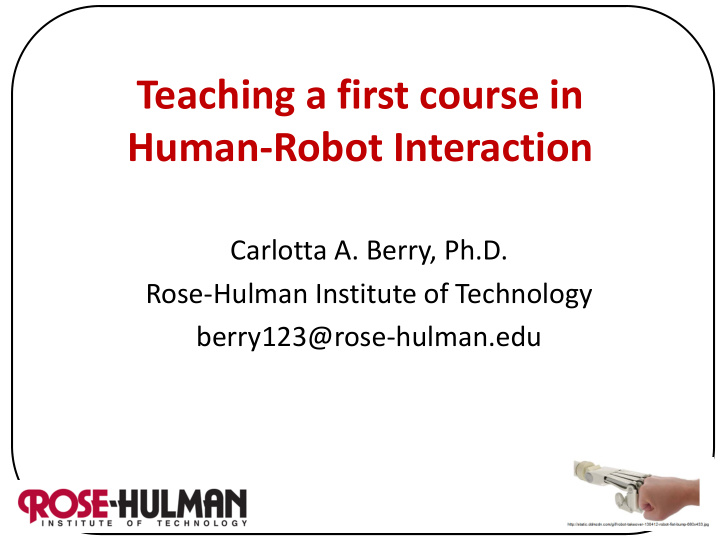



Teaching a first course in Human-Robot Interaction Carlotta A. Berry, Ph.D. Rose-Hulman Institute of Technology berry123@rose-hulman.edu
Introduction • Design and implementation of an introductory course in HRI • Relatively new field with no standard textbook, lectures, topics, or assignments • Survey of the field with integral laboratory component • Designed for students at various levels and backgrounds
• Designed for HCI graduate students • 4 undergraduate students enrolled in the course • 1 CS, 2 Media Arts & 1 International Student • Very limited technical skill Human-Robot Interaction course
What is Human-Robot Interaction? • Field of study to understand, design and evaluate robotics systems for use by or with humans. (Goodrich, 2007) • The objective is to develop principles to allow for natural and effective communication between humans and robots.
• Roles • Mental Model • Behavior/Response of Humans H • Expectations HUMAN ROBOT R • Interaction I • Modes of Communication • Robot Capabilities for Interaction Robots & Humans as a System
HCI vs HRI • Embodiment – Test robots in degraded conditions (environment, sensor errors) • Repeatability – No 2 robots act the same • Multiple roles of interaction • Multiple people can interact with the robot • Levels of autonomy
Topics & Format • HRI design for mobile robots • Weekly readings • Discussions • Quizzes • Labs • Projects • Arduino Robot
Robot Music Machine
Robot Dancer
Robot Conga
Robot Marco Polo
Robot Remote
Robot Rescuer
HRI Highlights
Conclusions • It is possible to teach students to do basic robotics & HRI who do not have a technical background • Labs with sensors were the most challenging • With extra instruction they were able to program, wire sensors & write technical documents • Focus more on interaction and interface design
Recommend
More recommend